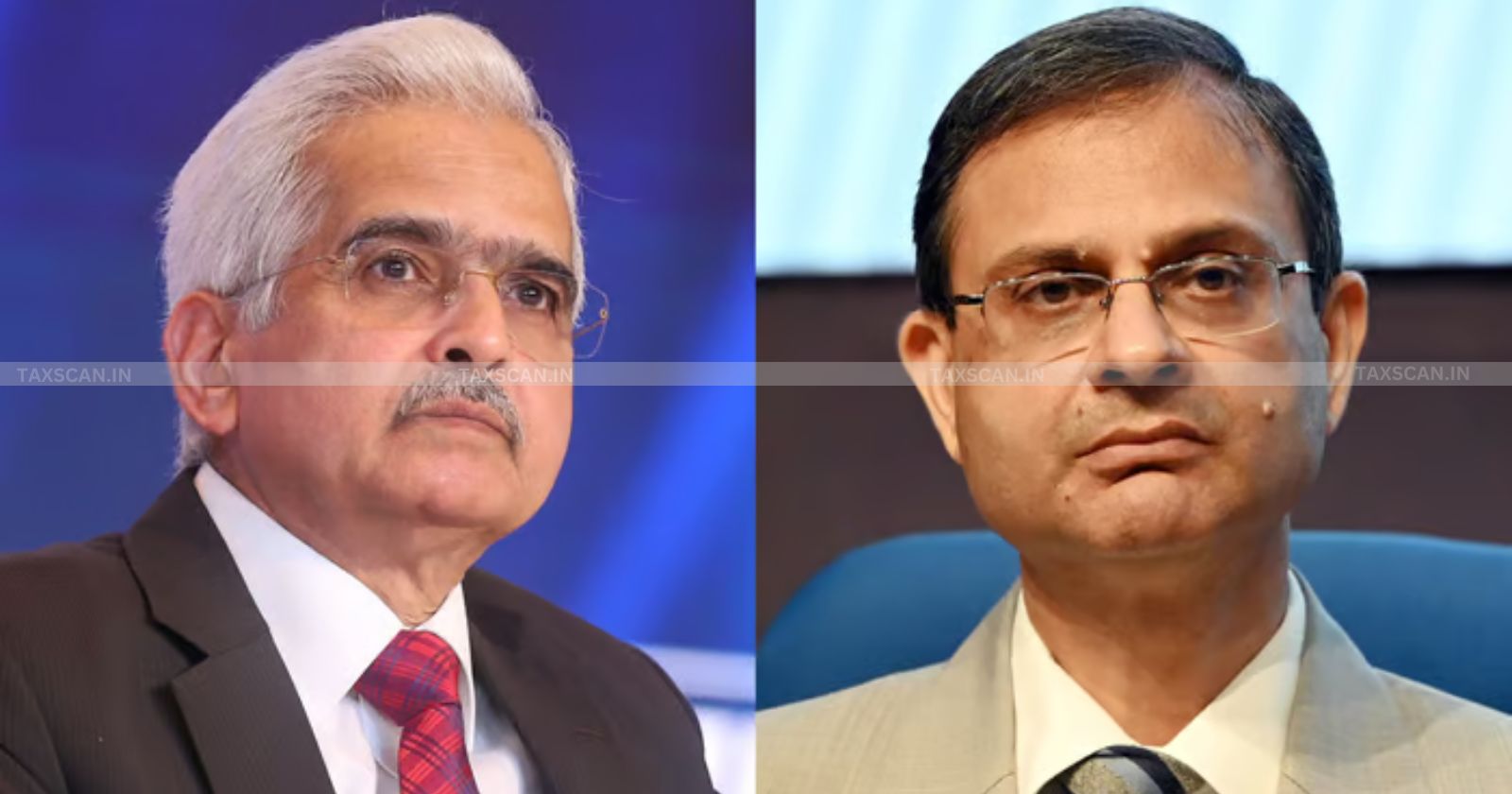Sanjay Malhotra and Shaktikanta Das: Circumstantial Differences among Ideological Alignment at the RBI HQ [Part 3/3]
Beneath the superficial similarities, their contrasting backgrounds, priorities, and the prevailing economic conditions of their respective inceptions at the RBI’s helm

RBI – Reserve Bank of India – Sanjay Malhotra and Shaktikanta Das RBI Alignment – taxscan
RBI – Reserve Bank of India – Sanjay Malhotra and Shaktikanta Das RBI Alignment – taxscan
As Shaktikanta Das steps down after a transformative six-year tenure as Governor of the Reserve Bank of India ( RBI ), his successor, Sanjay Malhotra, arrives at a juncture marked by both uncertainty and expectation. At first glance, their profiles and professional journeys seem to highlight a neat continuity in leadership style: both are seasoned bureaucrats with extensive experience in public service, and both come armed with the administrative heft needed to guide a complex economy.
The situational differences suggest that Sanjay Malhotra’s tenure may unfold quite differently.
The circumstances in which Das and Malhotra assumed office offer an illuminating first point of comparison. Das took charge in December 2018, at a time when India’s economy was grappling with the aftershocks of demonetization and the looming vulnerabilities in the non-banking financial sector. Das’s arrival was preceded by the abrupt resignation of Urjit Patel, a move that rattled markets and investors. Das’s mandate was clear: restore stability, rebuild trust, and reinforce the RBI’s credibility. Over the next six years, he rose to these challenges, implementing measures that bolstered foreign exchange reserves, steadied nervous financial markets through the IL&FS crisis, and navigated the unprecedented upheavals of COVID-19. By the time he stepped down, Das had carved out a legacy of resilience and pragmatic policy interventions that positioned the RBI as an agile institution capable of handling both domestic and global shocks.
Boost Your Earning Potential: Upskill in Tax and Finance
In contrast, Malhotra begins his tenure at a moment when India’s economy is struggling with a slower growth trajectory and stubborn inflationary pressures. The rift between the central bank and Prime Minister Narendra Modi’s government on the necessity of lowering interest rates provides a ripe testing ground for his ability to balance political pressure with economic prudence. While Das had the luxury—if it can be called that—of initially stepping in as a crisis manager, Malhotra confronted a more policy-oriented quandary. India’s growth has softened, inflation remains tenacious, and political demands for rate cuts will likely intensify. His challenge is to promote growth without undermining the RBI’s inflation-targeting framework, a delicate high-wire act that will test both his technical acumen and diplomatic skill.
Their backgrounds also shed light on potential differences in how each might approach policymaking. Das, a history graduate from St. Stephen’s College, emerged from the senior ranks of the Indian Administrative Service ( IAS ), an experience that molded him into a crisis-tested leader who excelled in diffusing market anxiety and nurturing public trust. His calm, steady demeanor was a soothing balm for jittery investors and battered banking stakeholders alike. Moreover, his tenure championed forward-looking reforms, such as the promotion of digital payments and tighter bank governance standards, all while weathering global storms from geopolitical conflicts to pandemic-induced recessions.
Malhotra, too, is a career bureaucrat, but his academic and professional background bears notable contrasts. Armed with a Princeton education and a reputation for mathematical rigor, he is known more for data-driven decision-making and predictive modeling than for public-facing crisis management. Colleagues describe him as a “hard taskmaster” with a keen eye for detail, a departure from Das’s more avuncular style of reassurance and consensus-building. If Das’s approach can be likened to a steady hand guiding a fragile vessel through rough seas, Malhotra’s might more closely resemble a strategist adjusting sails and setting course based on deep analysis of wind and tide charts. The difference may appear subtle, but it could translate into a more technocratic, data-centric style of leadership at the RBI.
Another key difference lies in the political economy of their appointments. Das’s arrival, after a period of tension between the government and the central bank, helped reset relationships and foster cooperation. Malhotra’s appointment, by contrast, may reinforce the government’s preference for bureaucratic continuity.
Observers note that with another IAS veteran at the helm, New Delhi’s influence on “Mint Street” could grow more pronounced, raising important questions about the RBI’s cherished autonomy. At a time when the central bank’s inflation-fighting credentials and independence are in the spotlight, maintaining the right balance between listening to the finance ministry and following the RBI statutory mandates will be an interesting point to watch closely upon.
Boost Your Earning Potential: Upskill in Tax and Finance
Ultimately, the differences between Shaktikanta Das and Sanjay Malhotra are less about ideology and more about circumstance, temperament, and skill sets. Das leaves behind a legacy defined by crisis management, trust-building, and cautious yet effective reforms. Malhotra arrives with a strong technical pedigree, facing demands for quick policy action and delicate compromises.
The nature of these differences will shape not only India’s monetary policy trajectory but also the evolving relationship between the central bank and the elected government. As stakeholders brace for Malhotra’s inaugural moves, it is clear that the legacy and style of his predecessor will cast a long shadow—one that Malhotra must navigate to make his own mark.
Support our journalism by subscribing to Taxscan premium. Follow us on Telegram for quick updates


